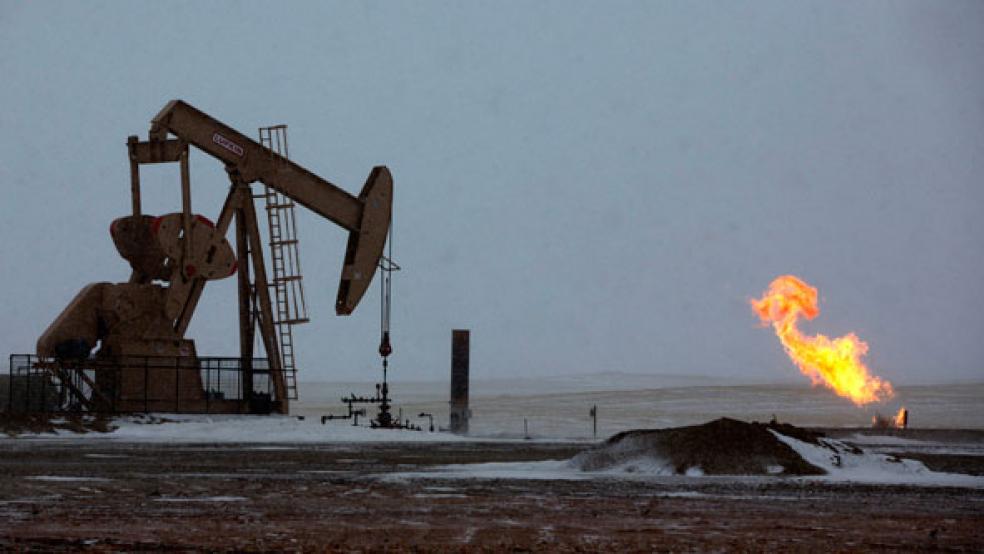One of the biggest complaints levelled at the energy industry when it comes to fracking involves the amount of water used in the process of cracking open layers of shale rock to free trapped oil and gas.
With an average frack well requiring about 2 million gallons of water, operators are under increasing pressure to limit their usage, and some jurisdictions have suspended water withdrawals to cope with low water levels in their watersheds, the result of low rainfall and higher-than-normal temperatures.
But what if something other than water could be used alongside sand and chemicals to break apart the layers of shale? While the industry has often used nitrogen and carbon dioxide (CO2) in so-called “energized” or “foamed” frack fluids to reduce water usage, recent research has focused on the use of C02 to completely eliminate water used in fracking.
Related: The Threat from Saudi Arabia’s Oil Power Play
Earlier this year, GE announced that it will allocate an additional $10 billion through 2020 to its “ecoimagination” budget, part of which will go towards investigating the viability of water-less fracking. GE, a major oil and gas industry supplier, will partner with Norway’s Statoil to investigate the use of carbon dioxide in frack wells. The two companies are hoping to find a way to collect CO2 at the wellhead, recycle it and then use it to frack again, repeatedly. In contrast, water can only be used once in a frack because it becomes contaminated with chemicals - creating another problem of how to dispose of all that wastewater.
The CO2 would be in a chilled form known as a “super-critical fluid” that is neither solid nor liquid. A major challenge is determining the right viscosity for the CO2, in order that it can do the job that water does now, of carrying proppant sand crucial for creating fissures in the shale rock. There is also the issue of how to transport CO2, a compressible gas, in large quantities for use in frack wells that are far from pipelines.
Waterless fracking has been tried before, but so far, has not been adopted in any meaningful way by the industry. In the 1990s a company called Canadian FracMaster proved that it could produce more oil and natural gas by fracking with CO2 instead of water, because CO2 fracks occur at higher temperatures. However, the research was still-born when the company went bankrupt.
Other companies are experimenting with the technique, but have been met with limited success. Ferus Inc. has a technology that separates CO2 from post-fractured natural gas wells, which the company says can eliminate frack water while also stopping the use of flaring. While the technology has been used in Oklahoma, northern Texas and Wyoming on more than 100 wells, producers in Western Canada have been slow to embrace it, according to an article in Oilweek. That’s because operators think that switching to CO2 will cost more.
Another company, Calgary-based GASFRAC Energy Services, introduced a water-less fracking technology back in 2008 featuring propane. But like Ferus, GASFRAC found its technology was a hard sell to operators whose margins are predicated on using low-cost water, or “slickwater” as it’s known in the fracking industry.
One promising technique comes from Praxair, the largest industrial gas company in the Americas, which recently launched its DryFrac waterless fracking technology using liquid CO2. DryFrac mixes CO2 with the proppant before introducing it to the formation, and the company says it can separate the CO2 returned from the well after fracking. The method is being tested in a sandstone formation in Oklahoma.
Related: The U.S. Shale Boom May Be Shorter Than Predicted
“The results are still coming in, but right now it is safe to say that when we pumped the job we were able to fracture the formation with carbon dioxide, we were able to place sand, or proppant, into the formation and now we are getting very nice results in terms of oil production,” a senior Praxair manager was quoted in the latest issue of New Technology magazine.
In the oil industry, money talks, so if water-less fracking can improve productivity, there is a good chance the industry will move faster to adopt it. In conventional fracking, the frack water that stays in the formation can block the flow of natural gas, therefore slowing down production and decreasing the amount it can produce over its lifetime. In contrast, using CO2 allows the natural gas to flow more freely and results in a better network of fractures, according to a research paper mentioned in a 2013 edition of MIT Technology Review.
While an industry-wide shift to waterless fracking is likely years away, as GE’s water-less fracking project leader has admitted, the technology is a good one for energy investors to have on their radar. Unpredictable weather patterns and droughts will continue having an impact on water supplies needed for fracking. Companies that show promise in developing alternative and environmentally-friendly methods of fracking are likely to be rewarded by the market and may even receive support from governments whose citizens would almost certainly get behind ways to conserve precious water supplies.
This article originally appeared at OilPrice.com.
Read more from OilPrice.com:
South America: The World's Next Unconventional Frontier?
Fracking Alternative to Hit Market and Revive ‘Dead Wells’
How An Unknown Industry Could Save Over $1.8 Billion In Wasted Natural Gas




